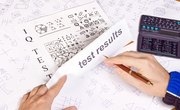When a child or adult experiences learning challenges, one of the first steps in finding help is to determine which specific areas of strength and weakness are contributing to the struggle. One way these areas can be determined is by using the Woodcock-Johnson test.
Unlike the most well-known standardized tests, such as the SAT (formerly called Scholastic Achievement Tests) or the GED (General Educational Development), which are completed independently by the test-taker, the Woodcock-Johnson test is administered by a psychology or educational development professional as part of a psychoeducational evaluation. Its basic purpose is to measure learning ability. The data from this test can then be used to diagnose learning disabilities, determine need for special resources and programs, and plan individual education plans.
Development and History
At its initial release in 1977, the Woodcock-Johnson test was actually the collection of several tests developed by Dr. Richard Woodcock to measure the test subject’s ability to learn in a variety of context areas. What began as the development of a test for measuring visual-auditory learning soon led to tests that measure the ability to learn to read and to learn mathematics. The Woodcock-Johnson family of tests has been expanded with offerings in more specialized areas, and to address modern educational developments and needs. According to Riverside Publishing, the test methods modeled by Woodcock have become the standard in modern test development.
Test Format
Today, the Woodcock-Johnson III Tests of Achievement and Cognitive Abilities number 20 in total. Tests 1 through 10 make up the Standard Battery, and the Extended Battery refers to tests 11 through 20. The tests do not take long to administer, averaging around five minutes each.
The test administrator may use a few or all of the tests, depending on which areas of learning ability are of interest for research or intervention. Dr. Margaret L. Camp points out that using all available tests within the Woodcock-Johnson battery allows practitioners to measure an individual’s cognitive processing comprehensively.
Types of Evaluation
The two major categories of learning ability addressed by the tests are intellectual ability and cognitive ability. The intellectual category includes tests on Visual Matching, Verbal Comprehension and Concept Formation. These tests are designed to measure a person’s verbal ability, thinking ability and efficiency in completing cognitive tasks. Tests that fall into the cognitive category include Planning, Pair Cancellation and Concept Formation, and measure executive functioning and working memory.
Testing Demographic
Although these tests are obviously helpful in determining early intervention goals for school-age children faced with learning disabilities, their usefulness is quite broad. Because the tests are rated for individuals ranging from 2 to older than 90, and have been compared to grade-level achievement standards for kindergarten through graduate school, they can be used to evaluate strengths and weaknesses in the cognitive function and learning ability of individuals of almost any age. This data can then be compared with the appropriate grade-level standards, providing insight into any gaps in a person’s learning history. With a plan for proper support and intervention, these tests can be the first step in a plan to help individuals of all ages overcome challenges and find increased success.
Related Articles
References
Writer Bio
A West Coast native, Rachel Phelps has more than 10 years of teaching experience. She's obsessed about making big ideas accessible through step-by-step instruction. She holds a Bachelor of Science degree in music and education, and is pursuing a Masters degree in communication and leadership.











